
views
Making Immediate Dietary Adjustments

Talk to your vet. After your vet identifies symptoms of heart disease in your older dog, they should recommend treatment options, including how to best feed your dog. Listen closely to your vet’s advice and follow it closely. Depending on the severity of your pet’s heart disease, your vet might prescribe a regular diet of commercial dog food or a more limited diet of prescription dog food. Ask your vet questions if anything is unclear.
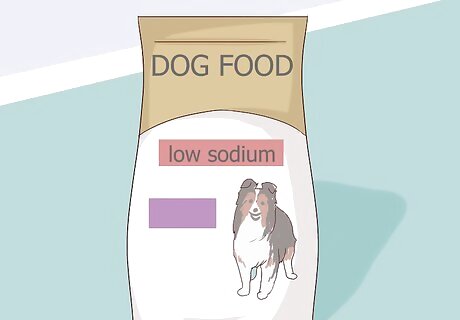
Limit sodium consumption. Look for dog foods that are labeled “low sodium.” If you can’t find such a dog food, consider ordering it online, or ask your local pet store to place a special order for you. Check the nutrition labels on the back of doggie snacks and bags of food to ensure your dog isn’t getting too much sodium. The specific sodium limits your dog can tolerate depend on its health and how much it eats. Consult your vet for more information. Look for low-sodium treats, too.

Feed your dog enough protein. Dogs need fewer calories as they age, but it is important to maintain stable levels of protein intake even as your dog gets older. Protein deficiencies are linked to the development and acceleration of heart disease. At least 25% of your older dog’s calories should be from protein. For instance, if your dog eats 1,000 calories per day, 250 of those calories should be protein. Adequate protein levels will also prevent your older dog’s muscles from atrophying.
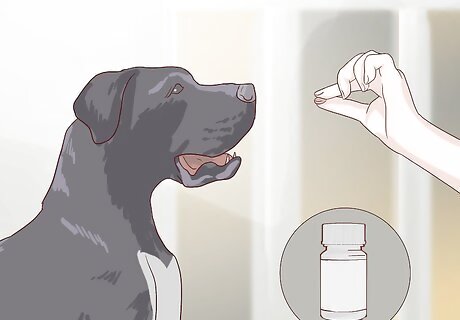
Add dietary supplements to your dog’s diet. Supplements add needed vitamins and minerals to your dog’s diet. These supplements are available at your local pet store. Always consult a vet before adding supplements to your dog’s diet. Supplements might come in capsule or liquid form. Consult manufacturer directions for more information about how to best administer your supplements. Popular supplements include: Vitamin B, which helps strengthen the heart so it can pump more efficiently Taurine and carnitine, likewise, strengthen the heart and also relieve edema (the buildup of fluid in the body, usually in the lungs or elsewhere). Coenzyme Q. This antioxidant can improve gum health and strengthen the immune system. Poor dental health often causes infections which can lead to or exacerbate heart disease. Omega 3 fatty acids. These supplements provide anti-inflammatory and inti-arrhythmic properties that will keep your dog’s heart healthy.

Don’t assume that senior dog foods are appropriate. There are a number of commercially available dog foods that are intended specifically for older dogs. But these dog foods may not be right for your dog. They often have higher levels of fiber and lower levels of protein than normal. If your dog is already getting an adequate amount of fiber and/or needs more protein in its diet, you should not purchase senior dog foods. Follow your vet’s recommendations to decide which type of dog food you should provide your older dog with heart disease.
Managing Your Pet’s Weight
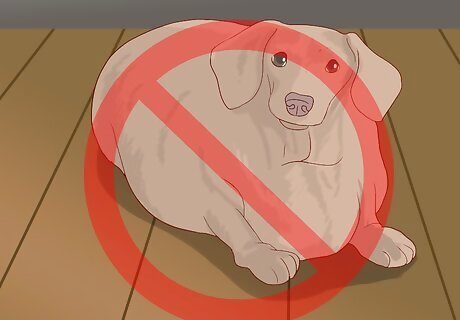
Don’t feed your dog too much. Older dogs tend to need fewer calories than they did in their younger years. Dogs gain body fat as they get older, even if they decrease their caloric intake. Feeding your dog too much will only accelerate the amount of body fat it accumulates. The specific calorie needs for your dog depend on its health, activity level, and weight. For instance, if your dog has a high activity level, it will need more calories. Overweight dogs will require fewer calories than a dog that is already at its ideal weight. Getting your dog’s weight down to a healthy level should be one of the first steps you take toward managing its heart disease.

Give your dog plenty of exercise. Like people, dogs can limit their chances of developing and worsening heart disease if they receive regular exercise. There are many options for keeping your dog fit and trim. For instance: Take your dog for a walk daily. You could walk at the park or just around the block. Play fetch with your dog. To play fetch, throw a soft ball or chew toy away from your dog in your backyard or other open space. Your dog will run to recover the ball and bring it back to you. Repeat several times until your dog is no longer interested in playing. Exercise will reduce your dog’s chances of developing arthritis, improve its immune system, and contribute to good overall health. If your dog is panting heavily, lagging behind or slowing its pace, or starts hacking or coughing, you should call it a day. Take your dog home and go for another round of exercise tomorrow.
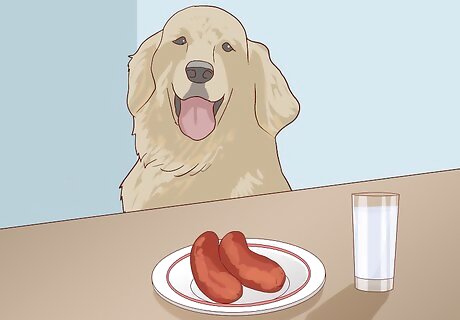
Adopt changes to your feeding habits. Even if your dog is eating modest meals, you might be encouraging obesity through a number of bad habits. For instance, perhaps your dog begs at the table when you eat with your family and gets table scraps. Maybe your older dog receives a number of small treats throughout the day for doing tricks or just being a good dog. The total calorie count on these small snacks can add up quickly, especially if everyone in the house is giving your dog a little extra. Communicate to your family that your dog is elderly and has heart disease, and therefore can’t get snacks and treats at the same level it used to. Instead of treats and snacks, give your dog extra verbal praise and physical affection. Place all treats that you do give in your dog’s bowl. This will reduce the likelihood that it begs for food from you directly.
Adopting Additional Methods for Disease Management
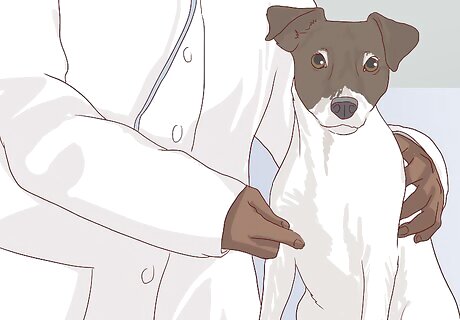
Take your dog to the vet regularly. As your dog ages, the more likely it becomes that it will develop heart disease or other maladies. If you can get an early diagnosis, your pet has a better chance of minimizing the negative effects of heart disease and other undesirable medical conditions. You should already have a vet for your older dog. If you do not, check the American Animal Hospital Association’s database at https://www.aaha.org/for-pet-parents/find-an-aaha-accredited-animal-hospital-near-me/ for a vet near you. Heart disease in dogs often has no observable symptoms, so it is important to get your dog checked out regularly.
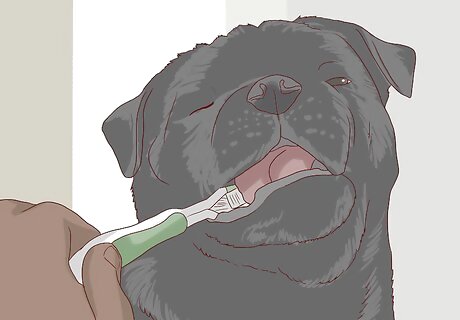
Take care of your dog’s teeth. Heart valves are often damaged by infections which start in the mouth. Buy a doggie toothbrush and toothpaste at your local pet store. Brushing your dog’s teeth is not unlike brushing your own teeth. Simply apply a dab of toothpaste to the brush and scrub gently across the surface of the tooth using circular motions. Do not use human toothpaste. Follow manufacturer directions when using doggie toothpaste.
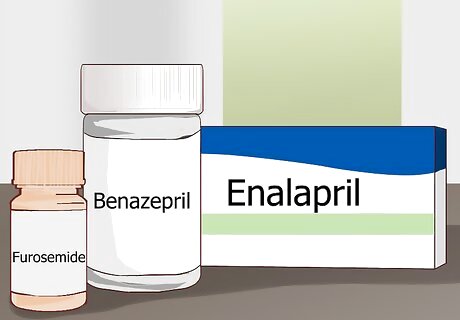
Try medication. There are several medications available to help your older dog manage its heart disease. Your vet will be able to determine which medication your dog would best respond to. Furosemide (available commercially as Lasix) is one of the most common treatment options. This medication causes excess bodily fluid that gets stored in the lungs due to heart failure to excrete as urine. Enalapril and benazepril are also commonly used. These medications allow the heart to pump blood more effectively. Do not administer human medication to your older dog.

Make plans for end-of-life care. If you were fortunate enough to catch your dog’s heart disease in its early stages, you might be able to give your dog a high quality of life right up to its final days. But if your dog’s heart disease went untreated until it manifested serious symptoms like heart failure or heart attack, you should think about what kind of life your dog will have afterward. For dogs that seem to be in a lot of pain or discomfort, have difficulty breathing, or demonstrate near-constant anxiety, the most merciful thing might be to choose euthanization. Euthanization is a process in which the dog receives an injection that ends its life. In other cases, even dogs that have survived heart attacks can live healthy lives but will need extra care and medication. Consider your options and weigh the decision carefully in consultation with your vet.

















Comments
0 comment